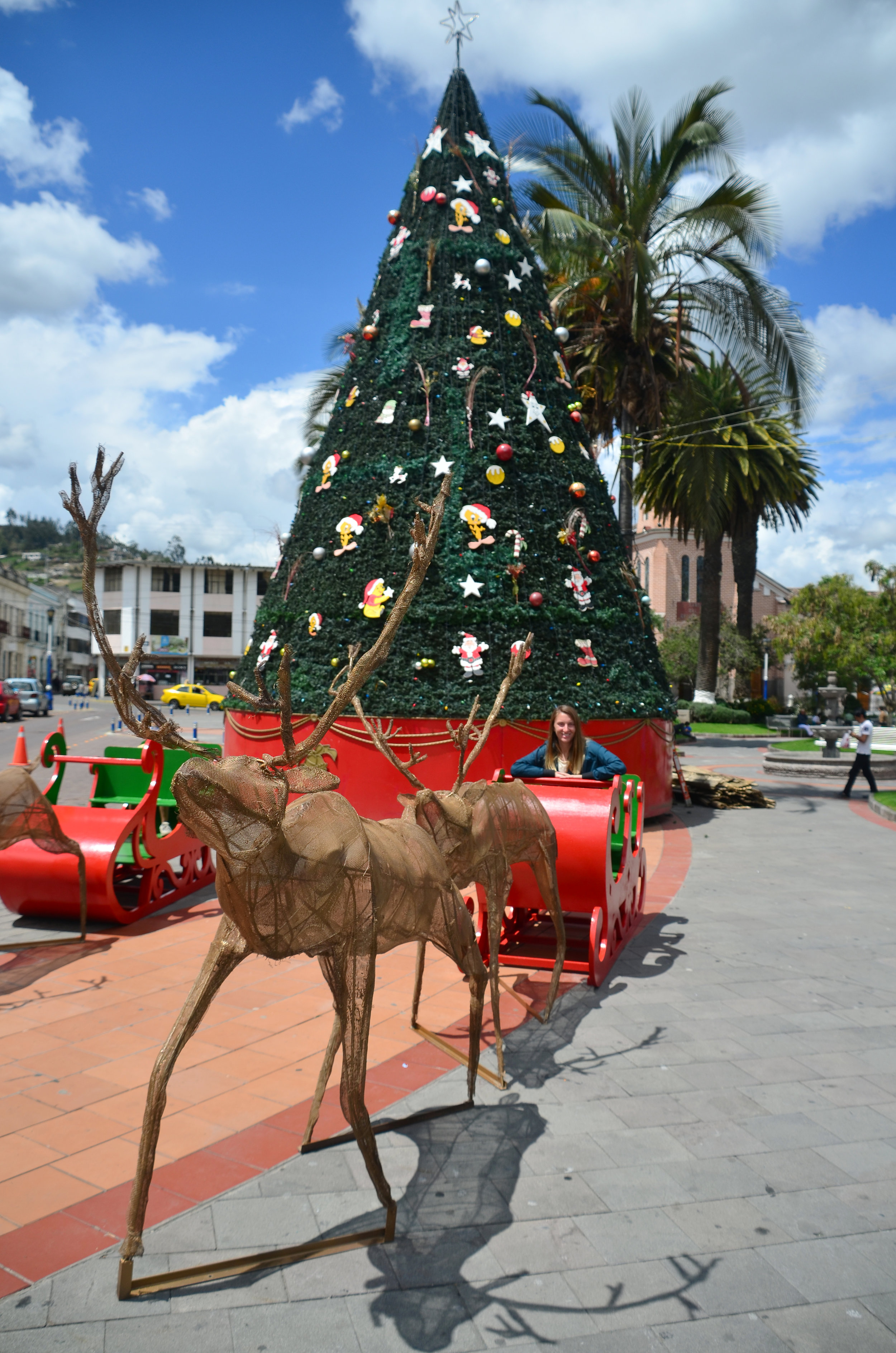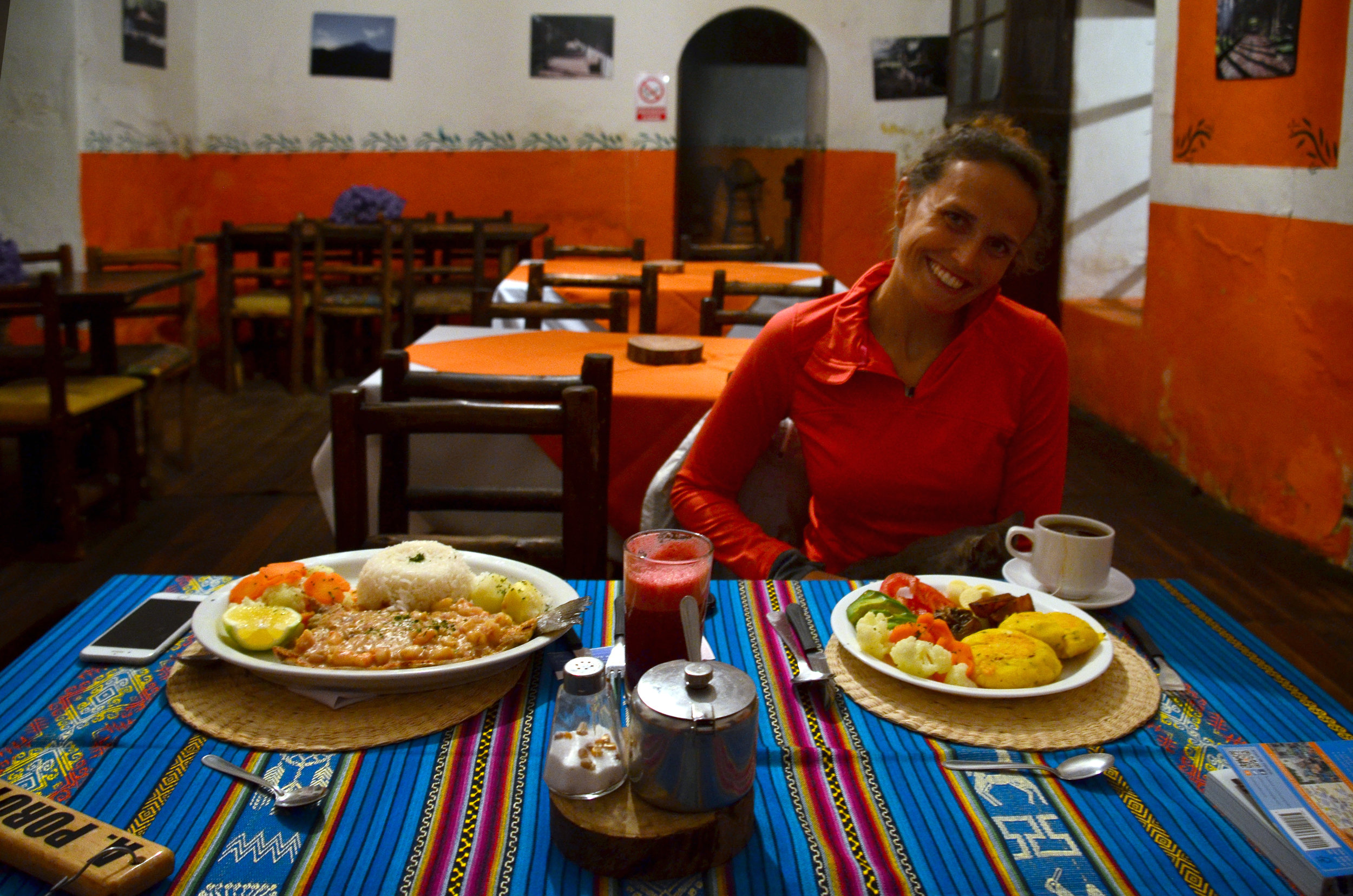Colors, Culture, and Cayambe
Cayambe, Ecuador
Cayambe was a colorful end to our bright and enlightening journey into South America. We stayed at a beautiful, breath-taking Hacienda, and visited the renowned Otavalo Market. We learned of the weaving history in Ecuador, and we were dazzled by it’s Northern Sierra landscape. Every neighborhood and town was nestled at the base of a Volcano or hillside. It was so hilly, that every turn was a view not to be missed. Farming laid patches over the slopes, and going into the towns, the roads were occupied by grazing cattle and playful dogs. We stopped by a Condor park, where many injured birds are being rehabilitated, such as the Andean Condor, but also many South American hawks, owls, and eagles. It was here that a rain storm stranded us in a small hut, where a woman started a fire for us and gave us hot cocoa. We were warm in our hearts and bodies, as we stood close to the fire, thrilled to be hearing a torrential down pour. You just don’t get those in San Francisco.
Best Moment: We decided to stay closer to Otavalo Market upon our return to mainland Ecuador, instead of going back to Quito. This way we were able to see more of the Northern Sierras of Cayambe. As it was a last minute decision, we relied on a recommendation to stay at Hacienda Guachala, not really knowing what a Hacienda was, or how historical this particular one was. We arrived late, around 8pm, as the rain was coming down hard. Once we entered, we were charmed instantly by the bouquets of purple flowers that adorned most surfaces, the tall wooden doors and stucco walls, and a dimly lit courtyard. The woman who greeted us did not know any English, but showed us to a large room that consisted of three beds, a wooden shelving unit, and a small desk with a mirror. Everything seemed to be assembled before nails were common methods of building, as they locked securely together without them.
An hour later we were sitting in a small dining room on the other side of the courtyard, with a blazing fire, hot tea, menus, and a cat named Lola on my lap. The owner walked in, who was a fascinating man that delighted in sitting with us, drinking coffee, and relating the history of the Hacienda. That its chapel was first built on the property in 1580, and with the Spanish acquisition, the Hacienda built around it. This is the oldest Hacienda in Ecuador. Through a tumultuous history, this place has seen many changes, but still has its original foundation and layout. The owner, who had moved away to Stanford University to become a mechanical engineer, came back home after he graduated to save his property. He planted eucalyptus trees for several years to ensure that the property stayed in his family, as it was his inheritance, and to keep the ranch he needed to work the ranch. Years later, he would be able to sell these trees and buy the remainder of the property from his family. Every piece of furniture in the Hacienda are made from these trees, and the valley that this Hacienda resides is a prime place for flower growing, especially roses, to export to other countries.
It was incredible to walk the grounds of the Hacienda, seeing the hundreds of rooms, that were once stables, then weaving factories, and now quaint hotel rooms. Plants and cactus were tall and thickly grown, and you felt you were in a South American paradise. We absolutely loved it.
Worst Moment: The full day we had in Cayambe was wonderful, however it was not the smoothest. We hired a taxi for the day, and the taxi driver relied heavily on google translate to communicate. Back and forth we would pass the phone, and most of the time we had no idea if he knew what we were trying to say. We wanted to go to a specific place, and kept insisting that we find it. But luckily he was a very sweet man, and he started asking around for us, and we were able to find it. But it was a struggle. The farther you go away from the main cities, the harder it is to get around as people who know zero Spanish.
Lesson Learned: Just outside of Otavalo, Jamie was determined to see traditional weaving in Peguche. We read about high-quality weavings at Jose Cotacachi’s studio, and it was here that we met Jose, who took us around his work place and his shops. He worked on the loom, showing us the process he does many of his tapestries with. It was beautiful! The best part of these tapestries are that they are still made using traditionally died fabrics and yarns. To make different colors, he would take an insect that feeds on cacti, and crush it in his palm. There is the red color. This would be the base for all other colors. From there, to make orange, he would add lemon juice to the blood palate. To make purple, he would add a pinch of sulfur to the red, or for a different shade of purple, ash. From there they dye the yarn, and everything that we saw hung up on walls were made using this traditional method.
Cultural Insight: Ecuador is known for their weavings, as well as for the Otavalo market. This market would bring artists from all corners of the country, and is the most renowned market of the weaving industry in South America. Because of its popularity, it is open every day of the week now, however it becomes something to see on Wednesdays and Saturdays. While we did not go on one of the renown days, we were able to walk among the stalls, seeing the weavings of table runners, blankets, ponchos, alpaca scarves, as well as wooden musical instruments.


































